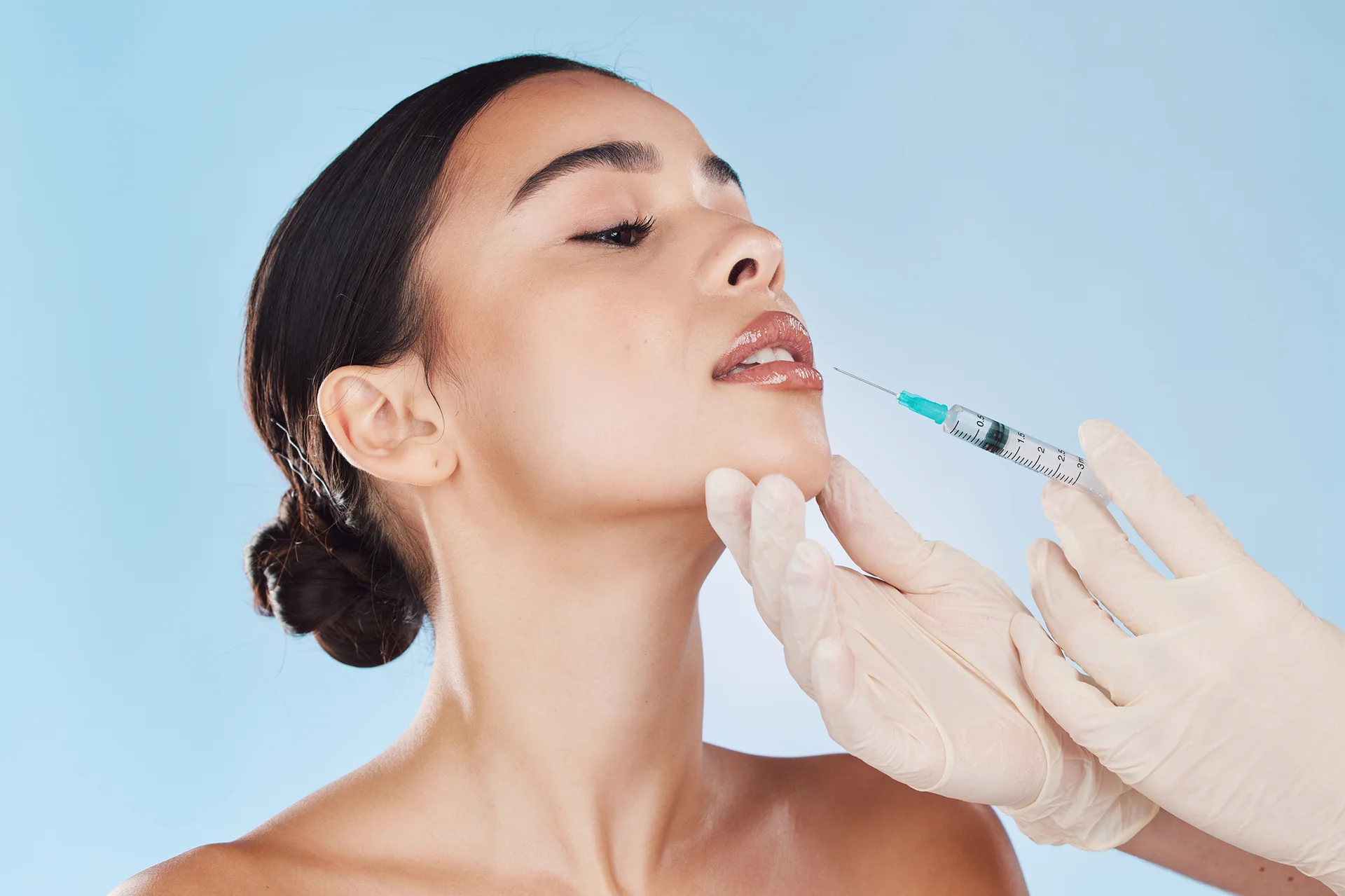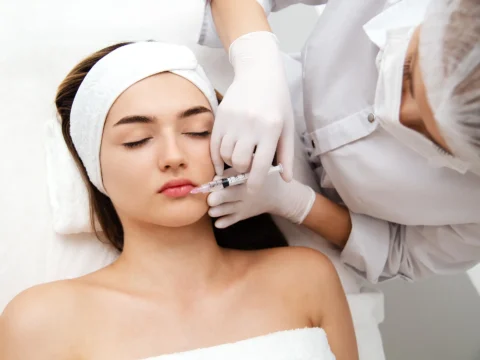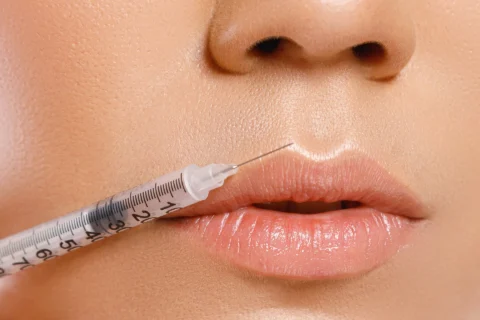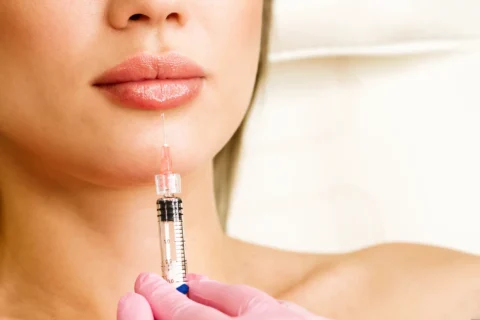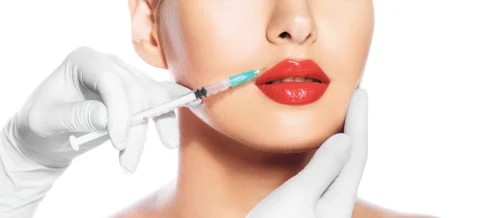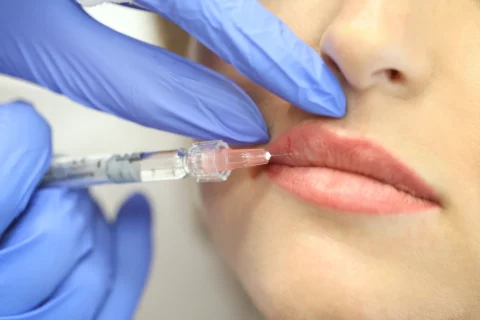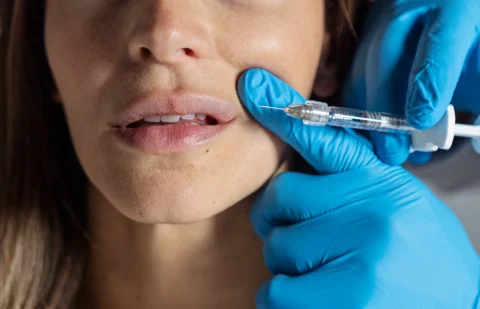Understanding and Preventing White Spot on Lip Post-Filler
So you’ve had your first lip filler treatment, or you’re thinking about getting one. After the procedure, it’s common to experience some mild bruising, swelling, redness, and tenderness, which typically resolve within a few days.
However, what might be more concerning is the appearance of white spots, patches, or discoloration on your lips. What causes these white spots, and how can you address them?
Understanding the causes of white spots after dermal filler treatments is important for effective prevention. Learning practical steps for handling these issues can improve the lip filler experience.
What Causes White Spots on Lips After Dermal Filler Treatments?
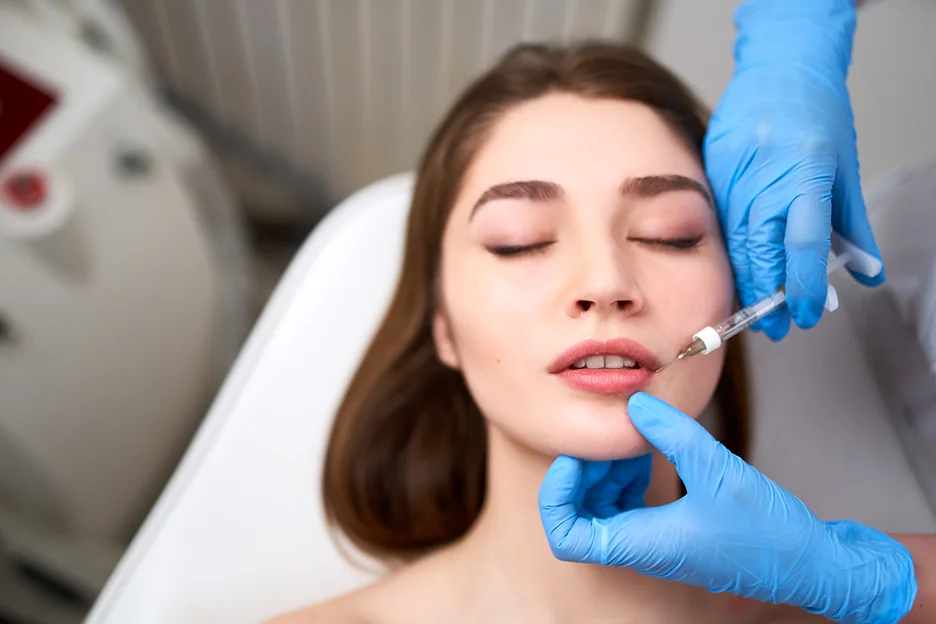
White spots on the lips following dermal filler treatments can be caused by a variety of factors. Understanding these causes is crucial for effective management and treatment:
Superficial Filler Placement
If the filler is placed too superficially, it can form a “bubble” under the skin, appearing as a white bump. Both of these conditions generally resolve as the filler settles or integrates with the tissue.
Vascular Occlusion
In some instances, dermal fillers can block blood vessels in the lips, leading to vascular occlusion. This can cause temporary whitening due to reduced blood flow and, in severe cases, tissue death. Such incidents require prompt medical attention. Monitor for signs like severe pain and skin color changes.
Swelling
Swelling right after treatment can lead to prolonged whitening of the lips, as it temporarily restricts blood flow. The normal color typically returns once the swelling reduces.
Filler Migration
Filler migration, a scenario where the filler material moves from the original injection site, can lead to the appearance of white spots in lip fillers. This migration typically occurs when the filler spreads into the areas surrounding the lips. As a result, the displaced filler can manifest as small, noticeable white spots on or around the lip area.
Delayed Reactions
White spots developing weeks after treatment can indicate a delayed immune response, a rare occurrence that usually resolves with medical intervention.
Triggering Cold Sores and Infections
Dermal fillers can sometimes trigger a cold sore outbreak, necessitating antiviral treatment, especially in individuals with a history of herpes outbreaks.
Moreover, the lips naturally harbor bacteria, and during filler treatments, these bacteria can cause an inflammatory response if they enter the wrong areas. Such inflammation is often due to a temporary increase in bacteria that stimulates the immune system.
Foreign Body Reaction
The body may react to fillers as foreign objects, leading to the formation of lumps or nodules. This is increasingly common with the widespread use of fillers for aesthetic enhancements.
Managing White Spots After Lip Filler Treatment
If you notice white spots following a lip filler procedure, consider these steps to address the issue:
- Stay Calm: Initially, understand that white spots might simply be part of the normal healing process. It’s common for such spots to appear temporarily as your lips adjust to the filler.
- Gentle Massage: If the spots are soft and pliable, you can try massaging them gently. Use a firm, circular motion by pinching the lip between your thumb and index finger. This can sometimes help in redistributing the filler evenly.
- Patience and Observation: Some white spots may be sebaceous glands (Fordyce spots), which can become more noticeable due to the pressure exerted by the filler. These are natural and present in everyone, and typically there’s no need for intervention.
- Seek Professional Advice: Consult with the healthcare professional who administered the filler. They can provide an accurate evaluation, diagnosis, and treatment plan. They might also recommend applying a specific ointment to alleviate dryness and discomfort.
- Consider Dissolving the Filler: If there’s no significant improvement, your doctor may suggest the use of hyaluronidase. This enzyme can break down the filler, though it may also affect the overall volume of your lips.
Worried about white spots after lip enhancement? Let Dr. Hardik Soni guide you through a safe and effective lip filler process at Ethos Aesthetics + Wellness
How Long Does It Take for the White Spots to Go Away?
The duration for white spots to resolve after lip filler treatments can differ based on several factors, including the underlying cause and the type of filler used. Typically, these spots tend to diminish on their own within 1 to 2 weeks. However, this timeline can vary:
- Cause-Dependent Duration: If the white spots are a result of common post-treatment reactions like mild swelling or the accentuation of natural lip features (such as Fordyce spots), they usually resolve as the filler settles and the swelling subsides.
- Treatment-Related Factors: The type and amount of filler used can influence how long these spots last. Some fillers might cause reactions that take a bit longer to subside.
- Persistent Spots: In cases where the white spots are due to more complex issues like nodules or granulomas, they may persist and not improve significantly without professional intervention. These cases often require targeted treatments.
As always, seek advice from a healthcare professional if you have any concerns regarding your cosmetic treatments. They can provide tailored advice and treatment options based on the specific nature of your condition and the type of filler used.
How Does Your Choice of Lip Filler Reduce the Risk of White Spots?
The choice of lip filler plays a significant role in the potential development of white spots on the lips. The filler’s properties can influence the likelihood of acute complications such as nodules, discomfort, and swelling.
- Dense Fillers and Their Effects: Fillers with higher density, like Voluma, offer more lifting power for the lips. However, their denseness can increase the risk of nodules, discomfort, and edema compared to less dense alternatives. In contrast, lighter fillers may provide less dramatic lifting but tend to have fewer complications.
- Hydrophilic Properties of HA Fillers: Hyaluronic acid fillers absorb water, which necessitates moderation in their application. Over-treatment can lead to prolonged swelling and unpredictable results, potentially leaving patients dissatisfied.
- Particulate vs. Homogeneous Fillers: Particulate fillers, such as Restylane, can add more structure to the lips. However, they might not achieve the same softness as homogeneous hyaluronic acid (HA) fillers like Juvederm or Belotero. The choice between these types depends on the desired aesthetic outcome and the potential risks associated with each.
- Semi-Permanent Fillers and Risks: Fillers like Radiesse and Sculptra are semi-permanent and generally not recommended for lip injections. The active muscle movements in the lip area can cause these fillers to clump, leading to nodule formation. Such complications might require surgical intervention for correction.
Prevention Tips: How to Avoid White Spots After Lip Filler Procedures
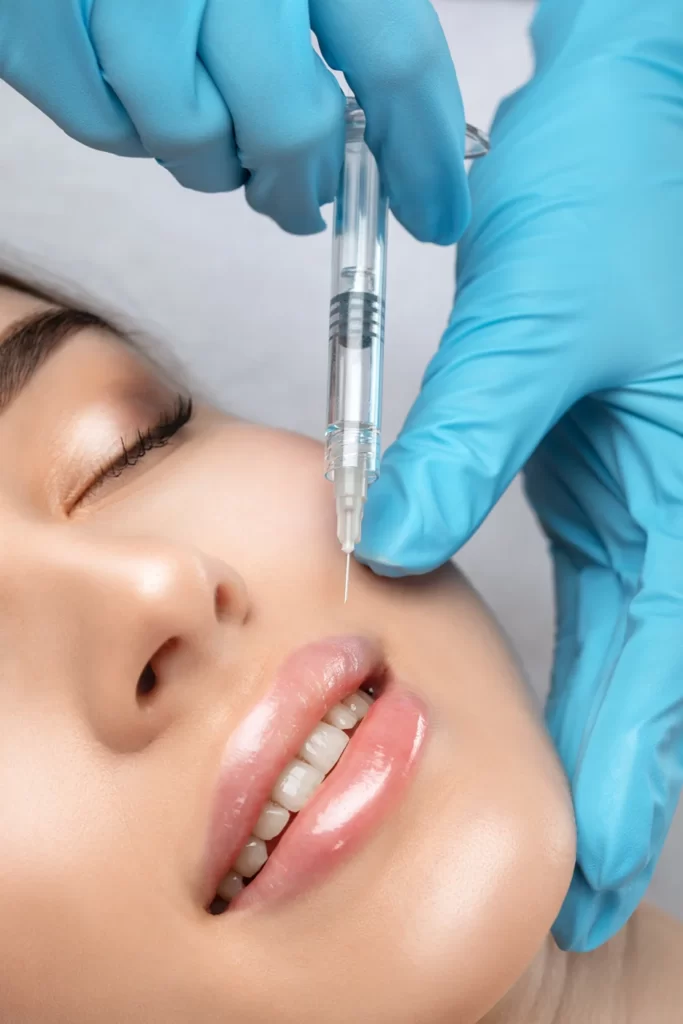
While rare in capable hands, certain precautions help minimize the risk of white spots or patches forming after lip fillers:
- Choose an Experienced Professional: Opt for a qualified and experienced injector. Professionals with a thorough understanding of facial anatomy and injection techniques are less likely to cause complications that could lead to white spots.
- Discuss Your Medical History: Be open about your medical history, including any previous occurrences of cold sores or skin reactions. This information can help your practitioner tailor the treatment to minimize risks.
- Opt for High-Quality Fillers: Use fillers from reputable brands known for their safety and efficacy. High-quality and FDA-approved products reduce the likelihood of adverse reactions and uneven filler distribution.
- Avoid Overfilling: Request that your healthcare provider avoid overfilling the lips. Excessive filler can increase the pressure on the lip tissue, making naturally occurring features like Fordyce spots more prominent.
- Follow Aftercare Instructions: Adhere to the aftercare instructions provided by your healthcare professional. This often includes avoiding certain activities and products that could irritate the lips or disrupt the filler.
- Monitor for Early Signs of Complications: Keep an eye out for any unusual signs, such as prolonged swelling or discoloration, and contact your healthcare provider if these occur.
- Regular Check-Ups: Schedule follow-up appointments with your injector to monitor the results and address any early signs of complications.
- Stay Informed: Educate yourself about the potential side effects of lip fillers, including the formation of white spots, so you can make informed decisions about your treatments.
Final Thoughts
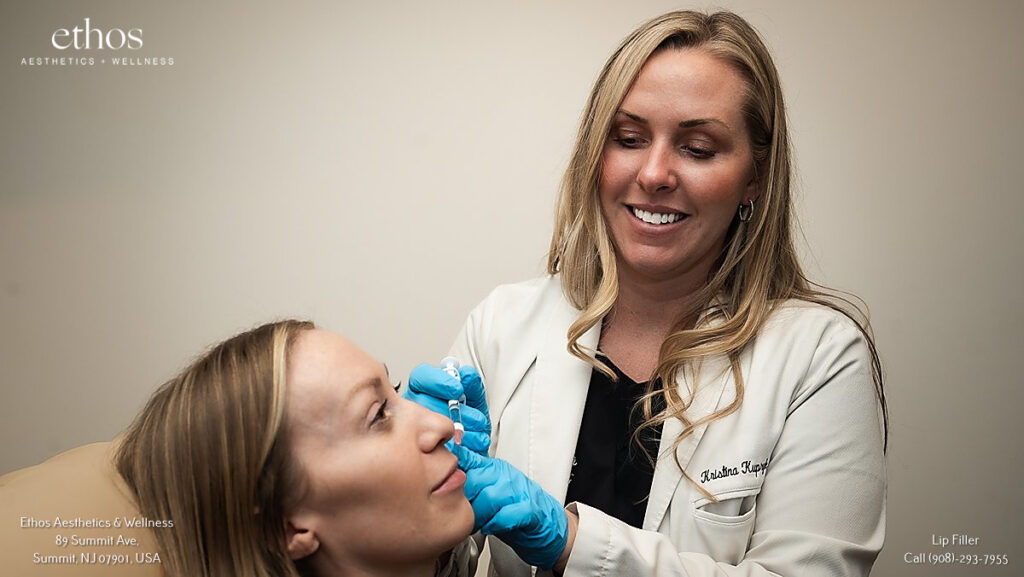
The emergence of white spots following lip filler procedures can be worrisome, but they are usually controllable and short-lived. Understanding their origins, being aware of the appropriate steps to take, and taking preventive measures are crucial for managing this side effect.
If you experience any persistent problems or worries, seeking advice from a medical professional is always the most prudent action. With proper care and attention, you can reap the rewards of your lip filler treatment with confidence.
FAQs: Understanding and Addressing White Spots After Lip Filler Treatments
Is It Normal to Experience White Spots After Lip Filler Injections?
It’s relatively uncommon, but white spots can occur post-lip filler treatment. They are often temporary and can be due to various factors like swelling, the type of filler used, or the natural anatomy of the lips.
Do White Spots After Lip Fillers Indicate Incorrect Injection Technique?
Not always. While incorrect technique can contribute to this issue, white spots can also result from factors like the type of filler used or individual reactions. It’s best to discuss any concerns with your healthcare provider.
How Can I Prevent White Spots from Forming After Lip Fillers?
To minimize the risk, choose an experienced injector, discuss any medical history that may impact your treatment, opt for high-quality fillers, and follow all aftercare instructions provided by your professional.
What Should I Do If I Notice White Spots After Getting Lip Fillers?
If you notice white spots again, don’t panic. Monitor the area and consult with your healthcare provider for an accurate assessment. In some cases, gentle massage or specific treatments may be recommended.
Are White Spots After Lip Fillers a Sign of an Allergic Reaction or Infection?
White spots following lip fillers are generally not an indication of an allergic reaction or infection. Nevertheless, the filler can trigger an inflammatory nodule if the body responds to it, either due to small quantities of bacteria that enter the area of the filler or the filler substance itself.
Can Certain Types of Lip Fillers Increase the Risk of White Spots?
Yes, the risk can vary depending on the type of filler. Denser fillers or those with certain properties might be more prone to causing issues like white spots. Discussing filler options with your injector can help you make an informed choice
Choose Dr. Hardik Soni for lip fillers and say goodbye to the fear of white spots. Schedule your session at Ethos Aesthetics + Wellness for expert care.

